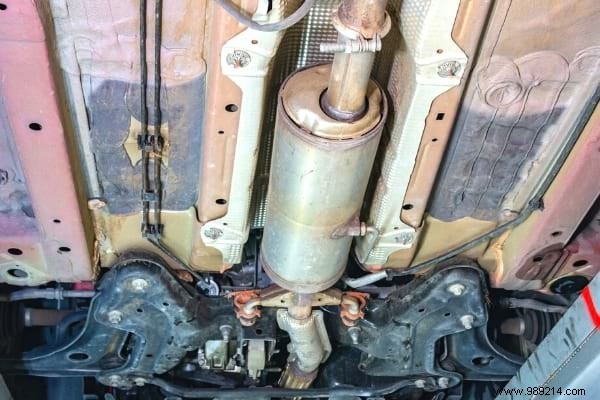
Today I explain how to clean your particulate filter yourself , says FAP.
You know what it is ? It is an engine part that traps harmful fine particles.
The problem is that DPF-related failures are very common on diesel vehicles.
And when you need to fix, hello invoice.
The garage asks you between 1500 and 4000€ in case of replacement!
But don't worry; I know how to save you that and make it look like new.
Discover the easy trick to properly clean your DPF without going to the garage. Watch:


Since 2011, the European standard E5 obliges car brands to equip each vehicle with DPF.
This measure was decided toreduce particulate emissions from diesel engines by 80%.
The DPF blocks soot particles in the engine before they are released to the atmosphere through the exhaust.
You know, it's those famous fine particles that are very harmful to health!
This system therefore reduces pollution, but is sometimes not without consequences for your vehicle.
Indeed, DPFs tend to no longer play their role when they are clogged...
I explain why below.
The explanation is as simple as it is important.
Maintaining your DPF avoids replacing it and therefore paying a very expensive repair at the garage.
In addition, by doing this, the life of your car increases.
And above all, the exhaust gases pass more quickly through the filter.
You see what I mean ? Thanks to this, fuel consumption is reduced.
At the price of the litre, it is not neutral!
Finally, it is also a technical control that happens without pain.
You often notice this when your car is shaking, losing power or when consumption increases abnormally.
It's not very serious, but you have to act quickly!
Because the situation can become worrying when the DPF warning light comes on or your vehicle goes into safety mode.
Cleaning is then sometimes no longer sufficient and replacing the DPF may be necessary!
Cleaning the DPF is all the more important if you make short trips around town.
Do you know why?
Because the FAP does not arrive to reach a temperature necessary to function effectively.
It is indeed thanks to the heat of the engine that it self-cleans in a way.
And the small paths do not allow the DPF to have the heat necessary to eliminate the particles.
Layers of particles then form and remain stuck to the walls.
The engine clogs up, becomes less powerful or even stalls on its own!
Let's see what to do if this happens to you.
To clean your particulate filter, you can use FAP liquid cleaner.
Simply pour the product into your fuel tank, respecting the quantities indicated by the manufacturer.
Do this when refueling.
This product lowers the temperature limit where the soot particles burn.
Thus, your engine no longer needs to reach a certain temperature to eliminate molecules.
This liquid cleans your engine from the inside out.
It eliminates the existing soot in your DPF and gives it a real boost.
And yes, it is quite possible to clean your DPF while driving.
To do this cleaning, you have to increase the engine speed to 3000 rpm for about 10 km.
Preferably choose a national or motorway, so as not to interrupt the cleaning by braking or slowing down.
By increasing the engine speed, the temperature increases which allows the soot to be calcined and thus clean your DPF.
This is called the principle of passive regeneration!
Please note, if your DPF light is on, this technique is no longer recommended.
Then consult a professional.
There is also an active regeneration technique, but this must be done by a mechanic.
Oh I forgot for the smart ones. Removing the DPF from your vehicle is illegal.
The Fapage is liable to a heavy fine, or even the impounding of your vehicle.
There you go, now you know how to clean your DPF yourself without going to the garage.
Easy, fast and efficient, isn't it?
Plus, it works for all vehicle makes and models.
Tiguan, Picasso, Astra, Golf, Qashquai, Audi, Mercedes, Opel...
I won't list them all but the method works for all vehicles.
No need to go to norauto anymore!